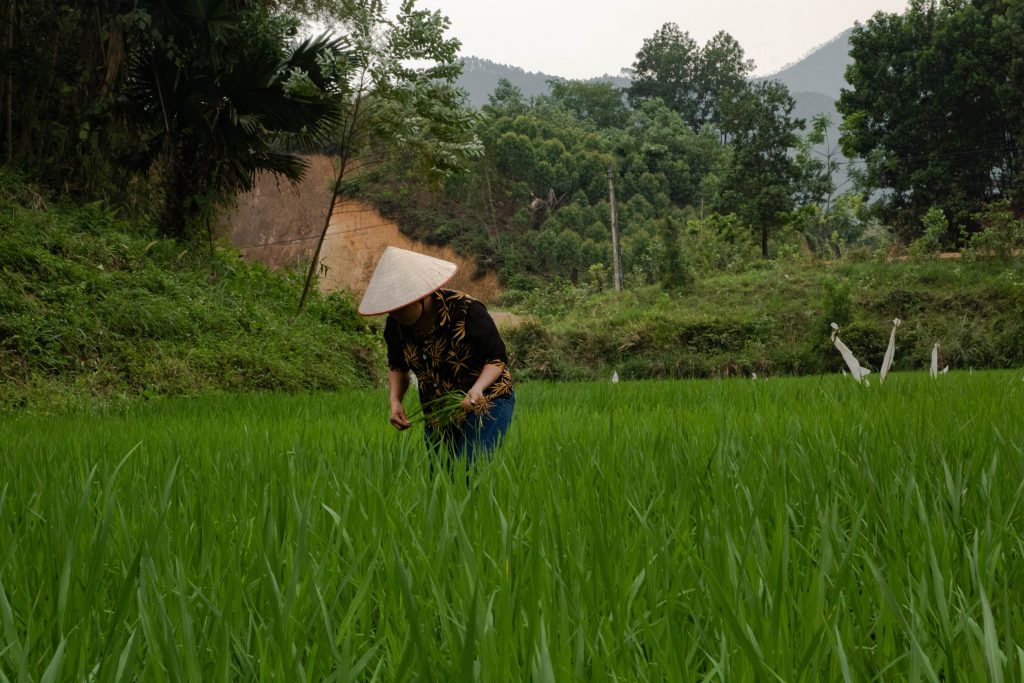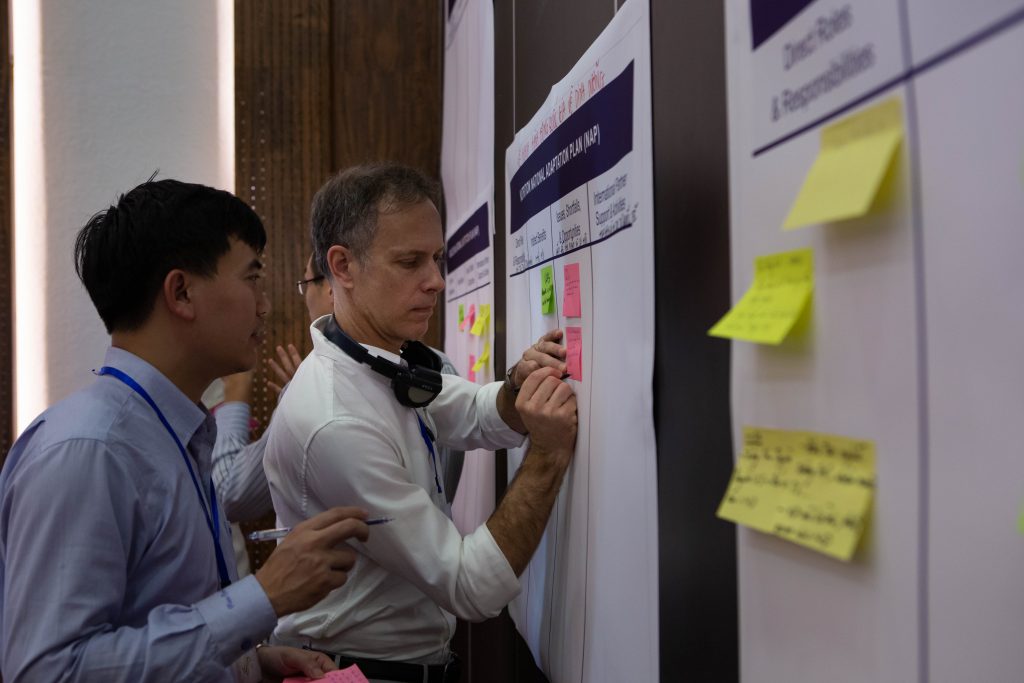John Furlow: Helping Developing Countries Adapt to Climate Change
This piece was written by Sarah Fecht of the Earth Institute and originally published on the State of the Planet blog.

John Furlow has spent more than a decade working with developing countries on the frontlines of climate change, helping them to adapt to changing conditions.
Before he came to Columbia University’s International Research Institute for Climate and Society (IRI), he saw firsthand how climate variability was affecting different aspects of society and the economy in the Great Lakes region while he worked for the Environmental Protection Agency. He has led climate adaptation programs for both the U.S. Department of State and USAID. He has advised the Jamaican government on national climate change policy, and supported scientists to develop seasonal forecasts that help to protect Jamaican farmers from droughts.
Today, as deputy director for international development and humanitarian assistance at IRI, Furlow continues to focus on climate risk and adaptation in agriculture. He leads the Vietnam portion of a Columbia World Project called “Adapting Agriculture to Climate Today, for Tomorrow” (ACToday). Through ACToday, Furlow and his team are helping to transfer IRI forecast tools to government institutions in Vietnam so they can develop seasonal climate forecasts to help farmers adapt to variable weather and to be food secure. The team is also helping the government implement a national mandate to introduce weather index insurance for farmers. He tells us more about this process, and the challenges of climate adaptation, in the interview below.
Tell us about the work you’re doing for the ACToday project.
In 2015, most of the world signed on to the U.N.’s Sustainable Development Goalsand the Paris climate agreement. Both agreements say that we should address climate risks, but there’s not much information in either about how to do that — how to take scientific information and use it to make better decisions to increase resilience.
With ACToday, we’re using climate information to enable better decision making in the developing world. ACToday was the first Columbia World Project, and works in six countries — Ethiopia, Senegal, Colombia, Guatemala, Bangladesh and Vietnam. Dannie Dinh helps me run the Vietnam part of the project. She grew up in Vietnam, and came to the U.S. in middle school. She graduated from Columbia’s School of International and Public Affairs and is now taking classes in the MA in Climate and Society program.
The idea behind ACToday is this: if the countries trying to achieve the Sustainable Development Goals on food security, nutrition and agriculture, are not adequately dealing with climate variability, they’re likely to fail. In countries where agricultural productivity has been undermined by drought, tropical storms, unusually wet years, unusually hot years — if they’re not adequately dealing with those threats now, they’re never going to be able to do so.
Seasonal forecasts enable farmers to see how weather is likely to affect yields in the next growing season. In Jamaica, for example, my USAID team worked with IRI to help Jamaica produce its own drought forecasts; farmers who used the information cut their losses by a third to a half. Some farmers filled barrels with river water to irrigate; some changed what they planted; others were more conscientious about mulching to help keep moisture in the soil. And others took the year off and made money in another way, so they weren’t wasting resources planting seeds that might never grow.

For ACToday, IRI and its partners are working in these six countries to produce forecasts at different timescales and build relationships with meteorological and agricultural programs. Those programs can then use the information as a lever to try to change behavior and decision-making and practice, and help people working in these sectors to access information and make informed decisions.
What are the specific challenges for Vietnam?
Last March, in Hanoi, we brought together individuals from different government agencies, including the agriculture and health departments, to talk about national policies that have to do with food security and nutrition. We asked them to explain to their peers what they’re trying to achieve, and asked, ‘Where could unfavorable weather or climate undermine the achievements of these policies?’ It turns out a lot of people are worried about drought. Some are worried about flooding, and others are worried about access to information — without information, they’re not sure what to worry about. We used this feedback to design the scope of our team’s work in Vietnam.

Part of Vietnam’s economic growth strategy is to support smallholder coffee farmers. The thinking is that for people with small landholdings, if they plant a low-value crop, they’re not going to make a lot of money. If they plant high-value crops like cacao or coffee, they can sell that to buy food and make other investments.
If there’s a dry year, coffee productivity drops. So farmers can use seasonal forecasts to make decisions about whether and when to irrigate, for example. We’ve been training staff in Vietnam’s meteorology office to produce seasonal forecasts that can tell coffee producers whether it will be drier-than-normal over the next three months. They’re interested in doing the same thing for other food products, too — probably starting with rice and fisheries.
We’re also working with the government on weather index insurance for farmers. They’ve asked for a training to understand how insurance works so they can be smarter consumers and regulators. They have a mandate to introduce this type of insurance, and they want to be able to advise farmers on policies. But this is new for Vietnam, and the government is very nervous that it will go badly if they don’t understand it well enough to provide sound advice.
Before you came to Columbia, you spent more than a decade working at USAID. How are things different here on the academic side?
USAID is biggest bilateral aid agency in world, with billions of dollars in funding to distribute. When you call someone in a country and say you’re from USAID and want to talk to them, they say, “Great, when can you be here?” It was very easy. Even though Columbia University is very well-known around the world, it isn’t as easy to get people to pay attention, because we’re coming in with ideas and capacity, rather than money. If you call a director and say “I want to take your staff away for a few days to train them,” there’s less of an incentive. But now people are starting to get excited as they see how well the project is working.
What are some of the challenges of climate adaptation in general?
I think the biggest challenge is getting people think about the changes that will affect them most. For years, the U.N. climate negotiations implied that adaptation actions should be in response to the long-term changes that we hear about when people talk about climate models. But information on conditions at the end of the century isn’t helpful to most livelihood activities. If a farmer in Vietnam is deciding what to do for the next season, and an aid worker comes along and says that by the end of the century, that part of the world could be 40 percent wetter or 40 percent drier, the farmer can’t do anything with that. But if we can provide good information for the timeframe or timeframes that matter most to farmers and other decision makers, they will be able to make better decisions and get better results. For example, in most poor countries, economies are built around farming, tourism and other activities that operate on a seasonal basis, and so they need information about what’s going to happen in the coming weeks and months. I think IRI is helping tremendously in this regard. I think it’s vital for people in the developing world to have the information that IRI produces.

You must be logged in to post a comment.